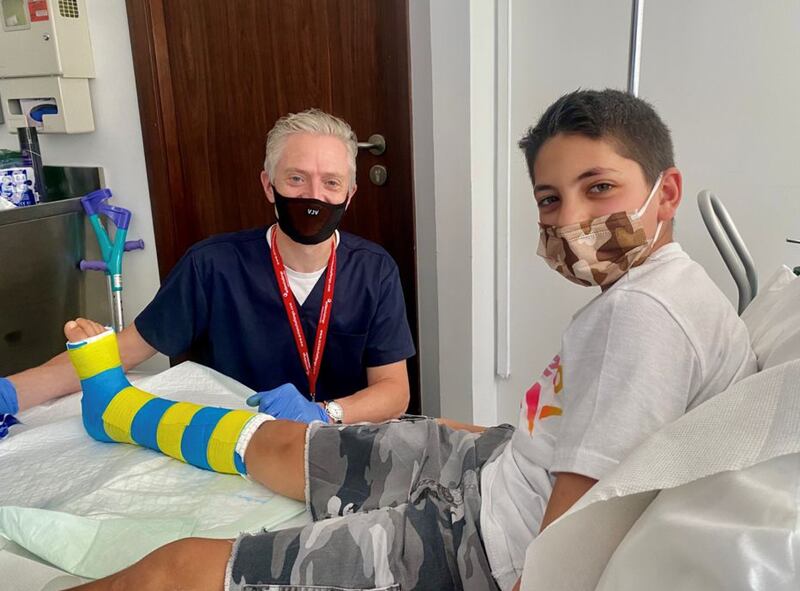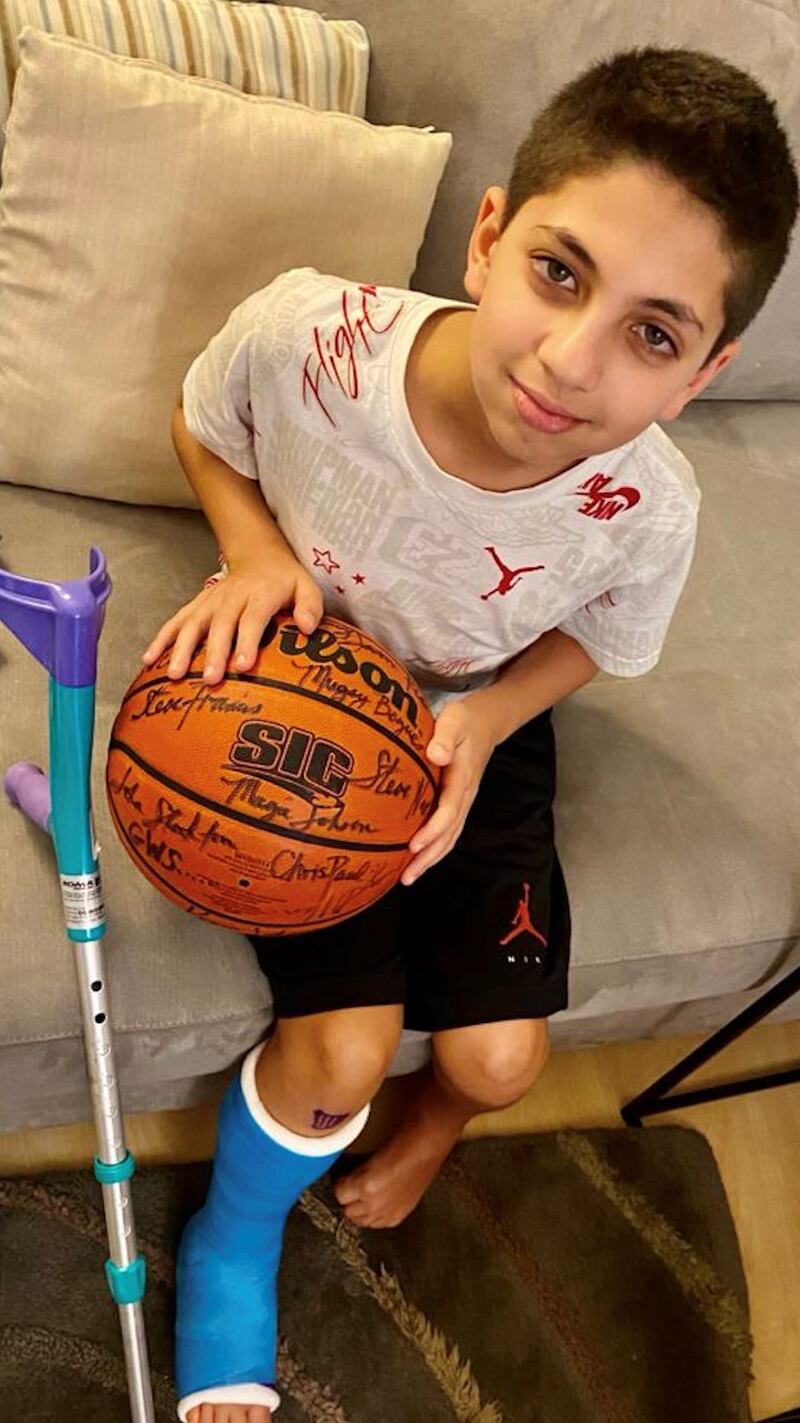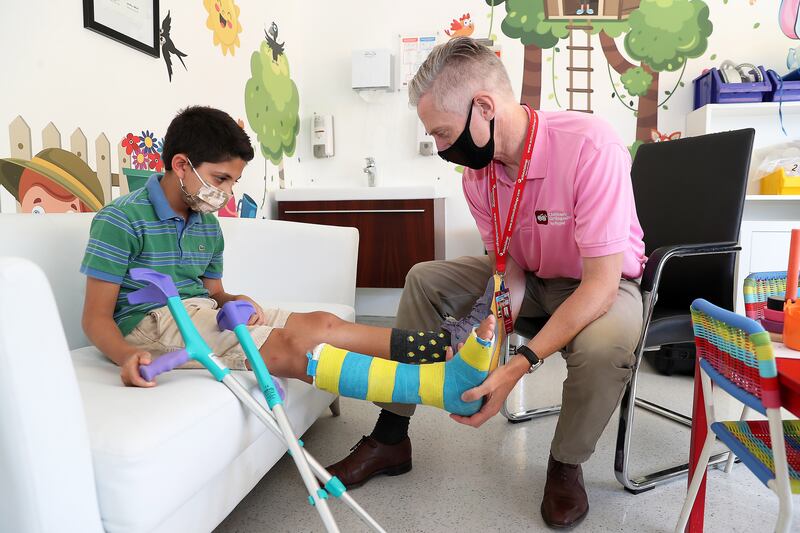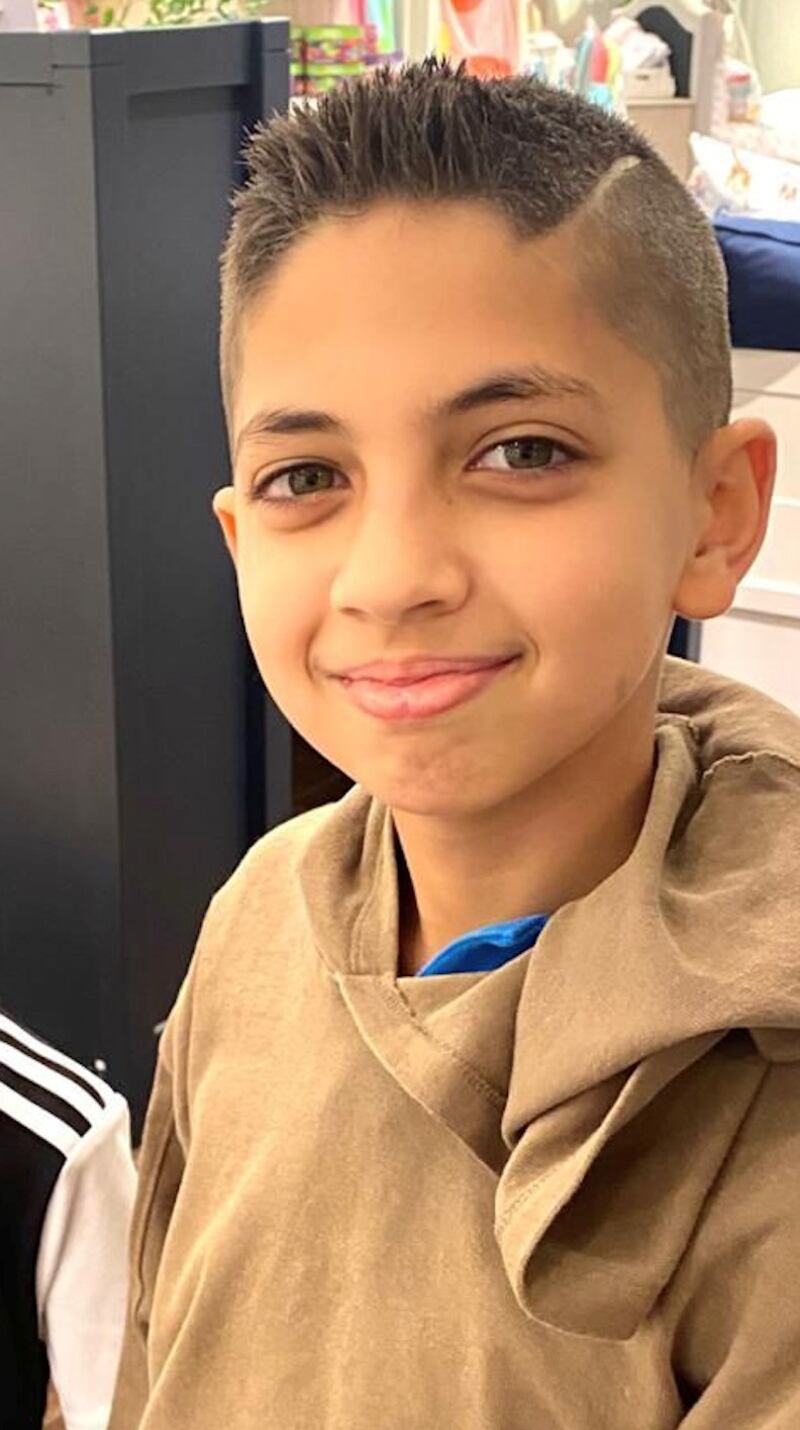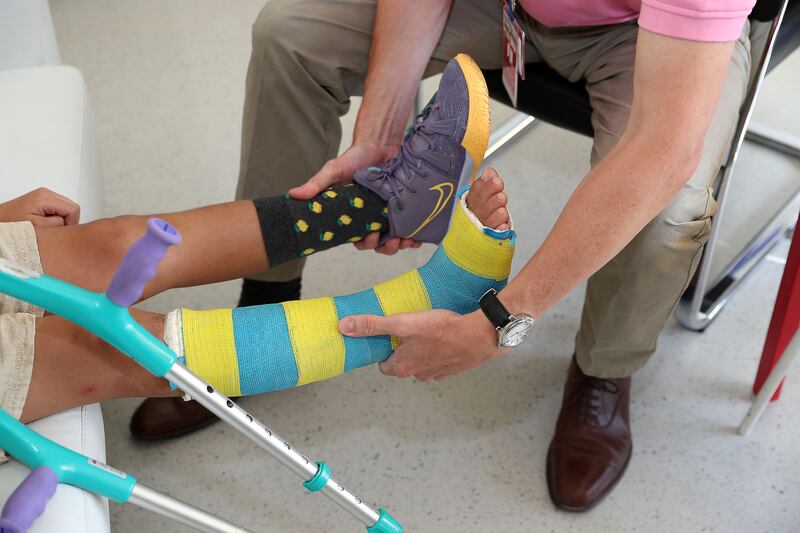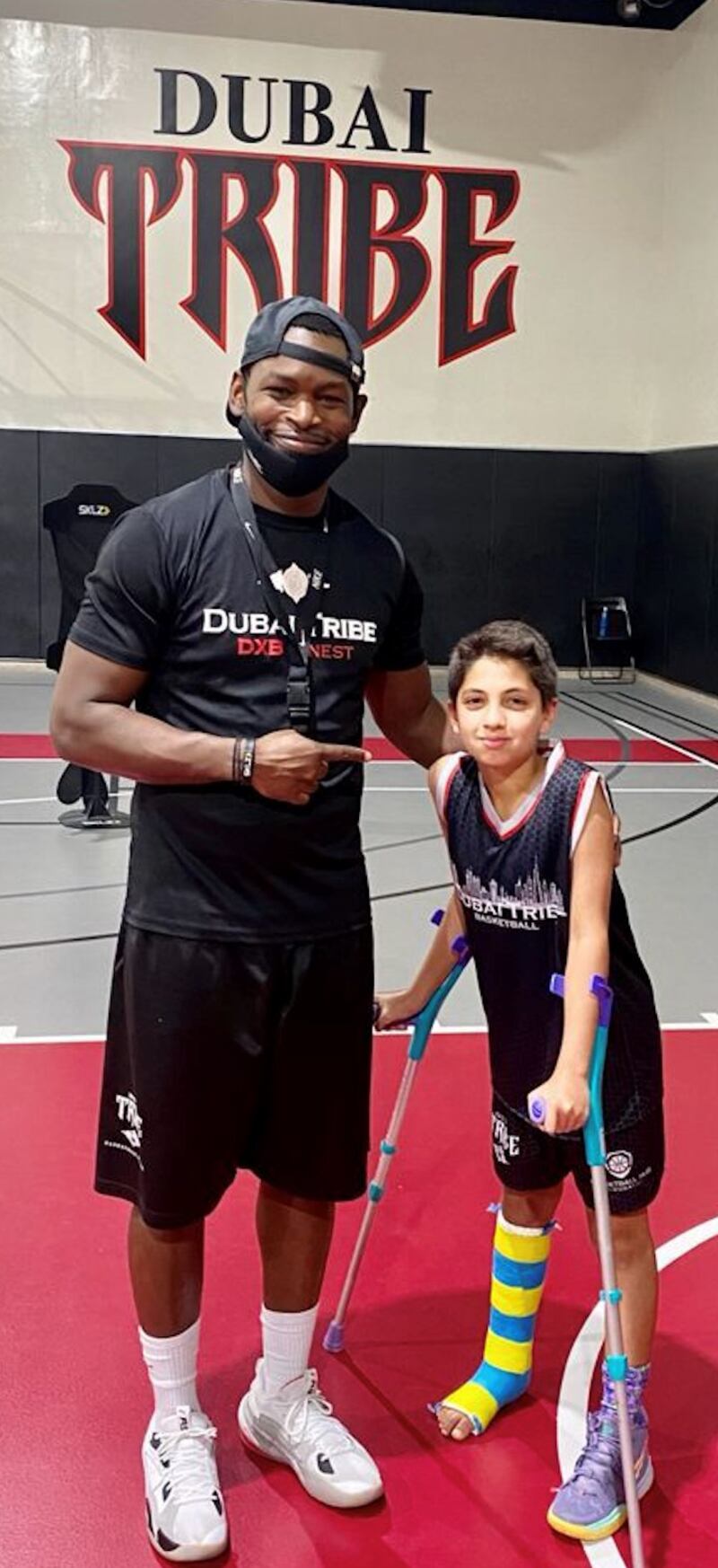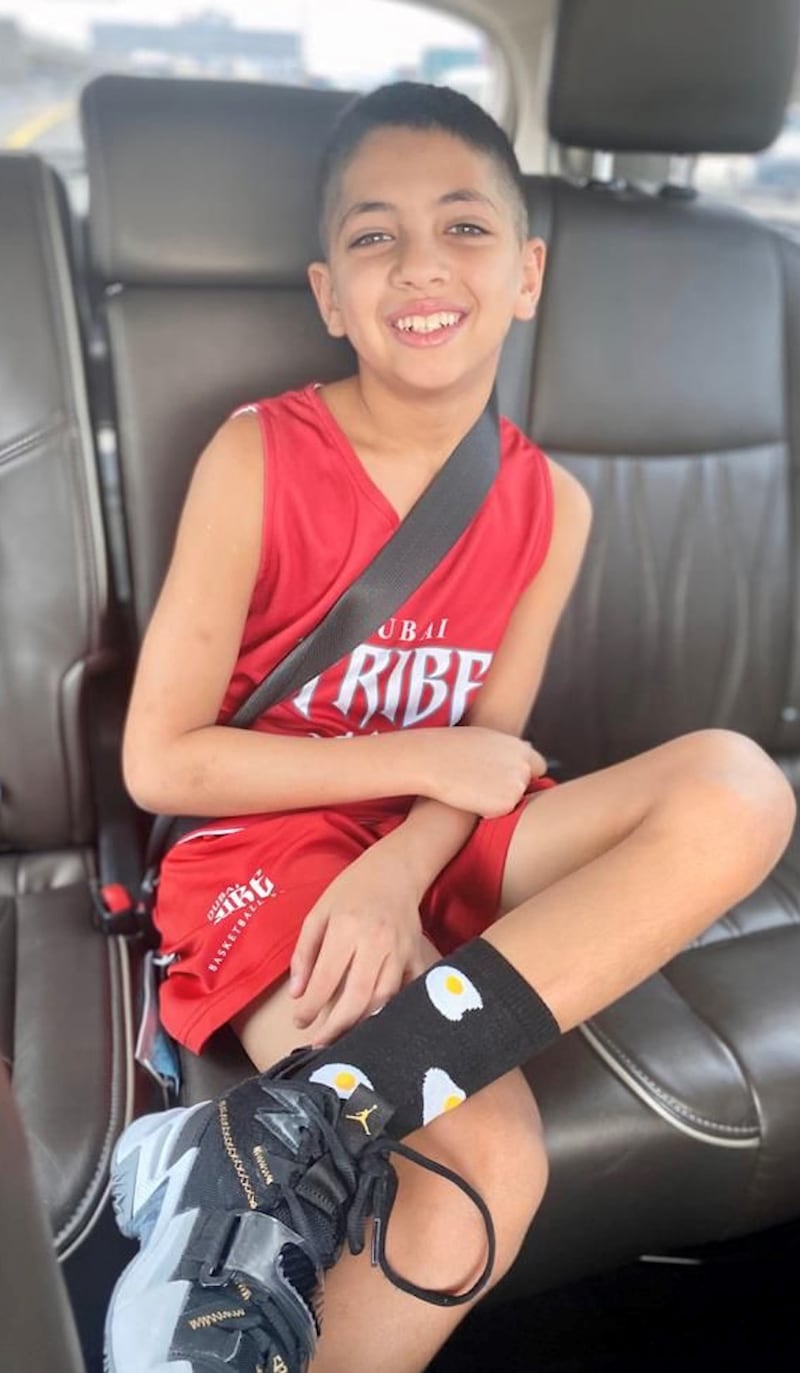A small piece of 3D printed plastic only a few centimetres long will change the life of Dubai schoolboy Talal Sawaf.
Talal, 11, was born with bowleg syndrome, or genu varum, and while that has not stopped him chasing his dream of becoming a basketball star, he needed corrective surgery to straighten his legs to stop him regularly tripping over.
The 3D printed surgical jig developed by a doctor for just Dh500 in Dubai allowed a precise incision to cut through Talal’s bone before it was realigned and metal plates fitted.
Because of software licensing issues, the printing would typically cost about Dh127,000, but a British doctor developed his own printing technique during the pandemic, at a fraction of the cost.
Dr Gavin Spence now hopes to expand the technique used on Talal to other young patients in developing countries to make the procedure more accessible.
“Lockdown was the perfect time to focus on other projects like this new method of 3D printing,” said Dr Spence, who works at Burjeel Hospital for advanced surgery in Dubai.
“For years we have had these kind of jigs, but each one is unique to the patient.
"They have been used commercially, but their software is patented and expensive. The software we use is free, open access and the 3D printer that we use costs about Dh500 so it is considerably cheaper."
The plastic used is biodegradable, costs only a few dirhams and can take just minutes to print.
"It is the software that is expensive and time consuming," he said.
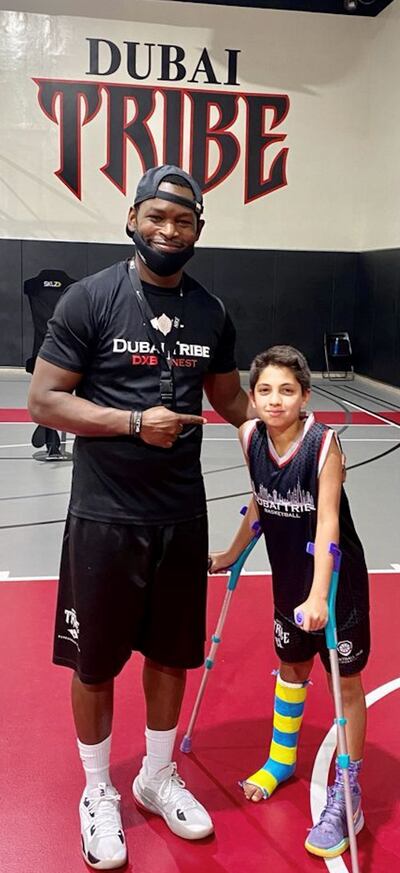
The plastic jig shows surgeons exactly where they need to break the patient’s leg so that it has the best chance of recovery and normal growth.
“The big advantage with this kind of technique is that it is very precise, and in developing parts of the world it can be easily transferable at a fraction of the cost.”
Dr Spence is hoping to establish an online forum to share expertise in the field.
So far, Talal has had two operations with doctors planning three more corrective procedures.
“Both of my feet were inverted, and my fibia and tibia were bent to the right,” said Talal, who plays basketball in the Dubai Tribe league and is inspired by his favourite player, Steph Curry of the Golden State Warriors.
“Every day I was tripping or falling over, but I still played a lot of sports, particularly basketball.
“I can’t feel any of the pins they inserted in my leg but I know it will take some more time.
“I can’t wait to play basketball again when I am better.”
A month after the first surgery, Talal began to take his first steps and is now adept at using his crutches.
He faces more operations in the new year, but once they are done, doctors expect him to be back on court at the Basketball Hub in Al Quoz by about April, if all goes well.
“Before the first operation it was scary, I was worried about being put to sleep,” said Talal, who is the oldest of three brothers and attends Dubai International Academy in Al Barsha.
“Now I know what to expect from the next surgery.
“It took me about 40 minutes to wake up, I didn’t feel a lot of pain but it was very weak, and I could not even raise my leg.”
There is growing interest in the applications of 3D printing in surgery, with the technology already used in joint replacement, spinal surgery, orthopaedic oncology, trauma surgery, dental and maxillofacial surgery.
Despite its numerous advantages, the technique has not been explored much in paediatric orthopaedics.
Other than the affordability factor, using a customised jig hugely increases the accuracy of surgery.
The tool helps plan out procedures in advance, especially in cases when a child has a complicated deformity in several planes.
Talal’s father, Said Sawaf, who works in architectural lighting, said the operation will make a considerable difference to his son's quality of life.
“There is a long period of recovery, but this will correct the deformity he has had since a child and enable him to have a much healthier life,” said Mr Sawaf, who is Arab American.
“He would trip over several times a day for no reason, so if he has any ambition for sports then this is the age to have the surgery.
“Talal wanted to watch the surgery afterwards and learn from it, he has a real interest in medicine now and wants to become a doctor when he is older.”
